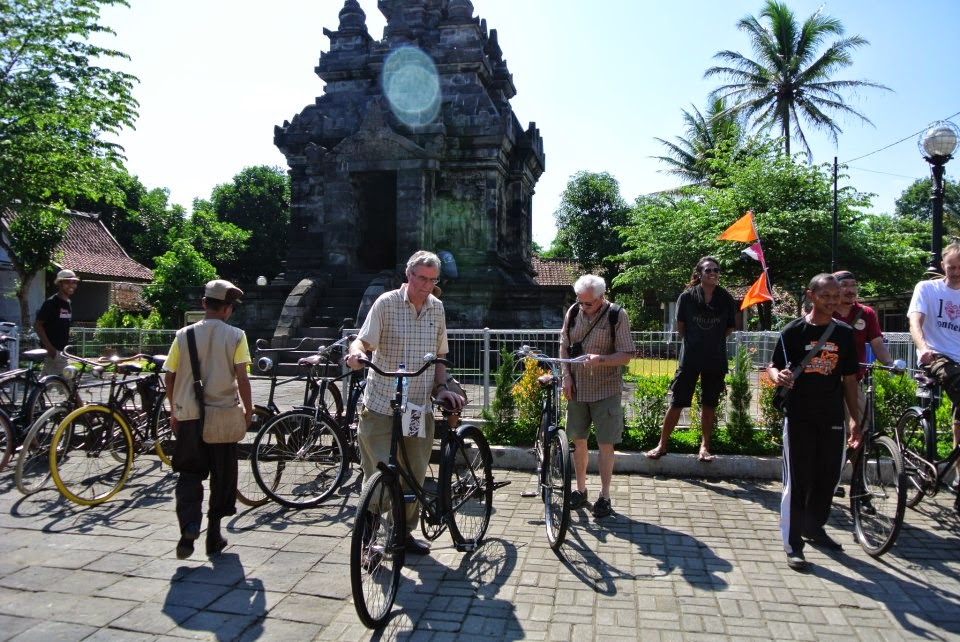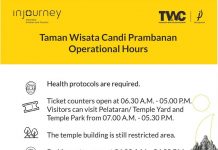Life is like riding a bicycle. In order to stay balanced you have to keep moving, are the words the world scholar Albert Einstein said about life. Such is life which is analogous to a bicycle that continues to run through the pedaling of the feet in order to keep going in a balanced manner.
That balance is what we try to do with the surrounding environment, when we take a bicycle tour from Plaosan Temple to Sojiwan Temple. By pedaling our bicycles we feel very close to the environment. The pedaling of the legs cannot possibly exceed the speed of motorized transportation such as motorbikes, cars and even airplanes anyway.
Our journey starts from Plaosan Lor Temple, a magnificent temple built by Rakai Pikatan for his consort Pramudyawardhani. Rakai Pikatan King from Wangsa Syailendra and Empress Pramudyawardani from Wangsa Sanjaya, they jointly built this temple. During their time there was harmony between Hindus and Buddhists with the construction of the Plaosan Temple by the two of them, a symbol of the union of the two dynasty. That is why Plaosan Temple is often referred to as the Temple of Love.
Slowly we pedaled leaving Plaosan Temple, not long after that we entered a small alley not far from the temple complex. Along with laughter, we stopped at a simple house to see the process of making melinjo chips, which is done manually. Arriving at the place, one of us asked for permission while at Java it called Kulonuwun to see the process of making the melinjo chips.
Mrs. Sri Aminah, a mlinjo emping craftsman explained to us the process of making melinjo chips starting with harvesting the red mlinjo fruit. After that, the peels are peeled and dried in the sun to dry, the mlinjo seeds are fried by mixing in sand to keep them warm so that they are young to shed the skin. After that, the pure white mlinjo seeds are roasted until warm. The goal is to make it soft when crushed / flattened according to shape and size.
After pounding the chips, they are dried in the sun to dry, and ready to be processed by frying. We also had time to taste some of the existing chips and some of us bought them for our bicycle tour.
We said goodbye warmly with shake hand to continue our journey. Still with a beautiful village atmosphere, we passed the rice fields which took us to the brick making area. When we got there, we discovered the process was at the stage of burning bricks using raw materials from roasted rice husks.
The next trip, we visited the craftsmen and angklung artist Mr Warno. At an old age, he is still passionate about work and when we arrived he was helped by one of his daughters to welcome us with the angklung perform while singing some Javanese songs with joy and hospitality.
The process of making angklung at his place uses jeni ori bamboo of various sizes. Mr Warno’s angklung is different from the Sundanese angklung. His creations look more unique and the tone of his voice is very different. In this place we are also treated to traditional dishes typical of the Taji Prambanan village community, melinjo chips, sticky tape and warm ginger tea drinks.
The end of our journey ended at Sojiwan Temple – this temple is a mirror and a witness of religious harmony in the past. According to the Rukam inscription (907 AD), the King of Balitung from the ancient Mataram kingdom offered a sacred building characterized by Buddhism to his highly respected grandmother. The king of Balitung is Hindu, while his grandmother is a Buddhist, who is located in Kebon Ndalem Kidul Hamlet Prambanan Village to enjoy lunch with a menu of lodeh vegetables, pecel tofu spices and urap vegetables plus side dishes of tofu and tempe and Karak (chips) typical from Prambanan.




